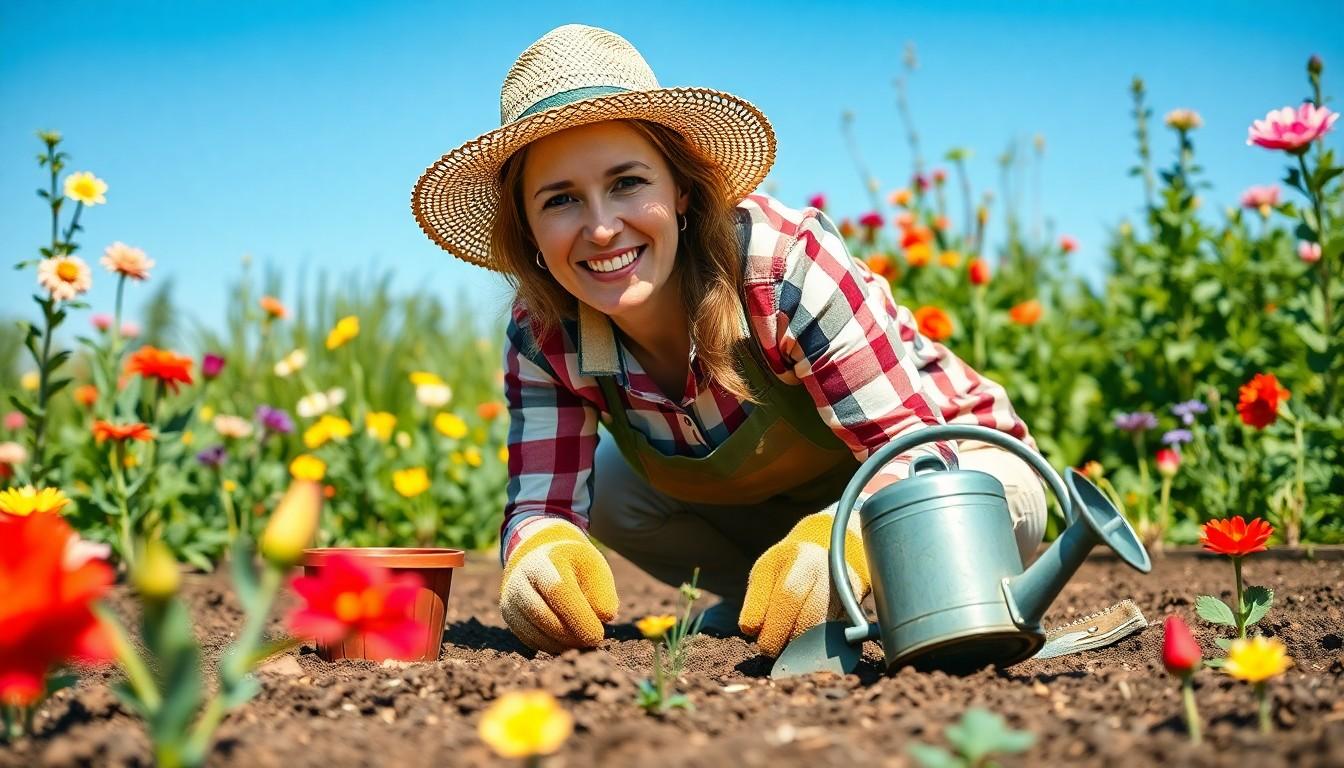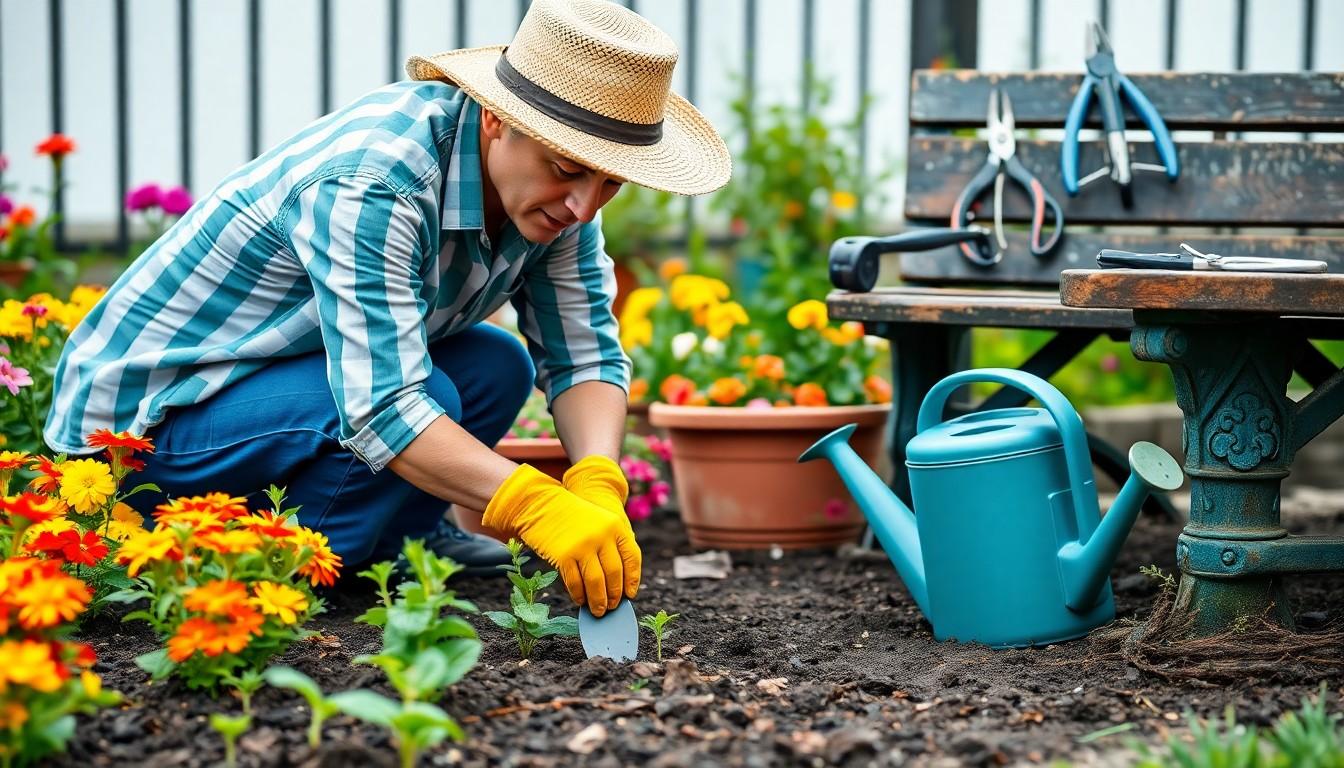Phone:
(701)814-6992
Physical address:
6296 Donnelly Plaza
Ratkeville, Bahamas.

As winter bids farewell and the sun starts to warm the earth, gardeners everywhere feel a familiar itch. Spring gardening isn’t just a hobby; it’s a chance to unleash creativity, soak up some vitamin D, and maybe even grow the next record-breaking zucchini. Who wouldn’t want to brag about their green thumb while sipping lemonade on a sunny afternoon?
Spring gardening offers numerous advantages. It creates an engaging environment for growth and promotes ecological awareness.
Improved plant growth is one of the foremost benefits. Warmer temperatures and increased sunlight create ideal conditions for seedlings. It becomes easier to cultivate a variety of plants, from vegetables to flowers. Many gardeners notice accelerated germination rates, leading to lush gardens. Regular watering combined with nutrient-rich soil enhances vitality. Species like tomatoes and peppers thrive abundantly during this season. Healthier plants yield more produce, maximizing harvests.
Positive environmental impact comes with spring gardening. This season encourages pollinator activity, benefiting bees and butterflies. Native plants enhance biodiversity in local ecosystems. More gardens contribute to cleaner air through natural carbon absorption. Resource-efficient gardening practices lower water usage in drier climates. Using organic gardening techniques helps minimize chemical runoff. Sustainability grows by promoting local food sources and reducing transportation emissions. Engaging in gardening fosters a connection with the environment, raising awareness about ecological stewardship.

Spring gardening requires the right tools to maximize efficiency and enjoyment. With proper equipment, gardeners can tackle various tasks easily.
Essential tools include hand trowels for planting and digging, pruning shears for trimming and shaping, and garden forks for soil aeration. Reinforcing efficiency, gloves protect hands from thorns and dirt while providing grip. Watering cans and hoses are crucial for hydration, ensuring plants receive adequate moisture. Additionally, wheelbarrows ease transporting materials across the garden. Lastly, consider kneeling pads for comfort during extended planting sessions.
Technology enhances spring gardening by introducing smart solutions. Gardeners can use apps for tracking plant growth and scheduling watering times. Sensors measure soil moisture levels, providing precise watering advice. Automated irrigation systems simplify watering tasks, saving time and ensuring efficient use of water. Moreover, garden drones can assist with monitoring large areas, spotting pests or growth issues quickly. Embracing these innovations elevates the gardening experience, making it more productive and enjoyable.
Preparing a garden for spring involves several important steps. Gardeners focus on ensuring optimal conditions for plant growth to achieve bountiful yields.
Soil preparation serves as the foundation for healthy plants. Testing soil pH reveals nutrient levels, guiding necessary amendments. Adding organic matter like compost improves soil structure and fertility. Tilling the soil aerates it, promoting drainage and root development. Removing weeds and debris prevents competition for nutrients and water. Applying mulch conserves moisture and reduces weed growth. Regularly mixing in fertilizers provides essential nutrients for vigorous plant growth.
Choosing the right plants increases the likelihood of a successful garden. Assessing climate zones helps identify suitable plants for the region. Selecting native species supports local ecosystems and requires less maintenance. Opting for a mix of annuals and perennials offers year-round interest. Considering companion planting promotes natural pest control and improves yields. Exploring local garden centers provides access to healthy, well-suited plants. Finally, researching flowering times ensures continuous blooms throughout the season.
Spring gardening thrives on effective planting techniques, ensuring robust plant development. Proper methods pave the way for vibrant gardens filled with healthy plants.
Choosing the right seeds is crucial for a successful spring garden. Look for varieties suited to the local climate; this increases the chances of a bountiful harvest. Heirloom seeds often provide unique flavors and colors. Popular options include tomatoes, peppers, and beans. Always check seed packets for germination rates and planting depths. Fresh seeds yield stronger seedlings, so buy from reputable sources. Selecting disease-resistant varieties minimizes the risk of plant issues. Consider growing a mix of annuals and perennials to create a diverse and sustainable garden.
Companion planting enhances growth and protects crops from pests. Pairing certain plants, like tomatoes with basil, improves flavor and repels harmful insects. Grow carrots near onions to deter carrot flies, creating a mutually beneficial relationship. Consider spacing plants to maximize sunlight and airflow, which helps prevent disease. Incorporate nitrogen-fixing plants, such as legumes, to enrich soil health. Employing flowers like marigolds can attract beneficial pollinators while deterring unwanted pests. Utilizing strategic planting arrangements fosters a thriving ecosystem in the garden and can lead to higher yields.
Maintaining a spring garden involves regular attention to watering and pest control.
Watering practices play a critical role in plant health. Ensure soil remains moist but not saturated. Use a drip irrigation system or soaker hoses to deliver water directly to roots, minimizing evaporation. For newly planted seedlings, apply water every few days until established. Early mornings are ideal for watering, as temperatures are cooler. Monitor rain levels to adjust watering accordingly, aiming for about one inch of water weekly. Check for wilting leaves, signaling a need for more moisture.
Effective pest control methods safeguard plants from damage. Encourage beneficial insects, such as ladybugs and lacewings, by planting diverse flowers. Use organic pesticide options like insecticidal soap for targeted treatments. Introduce barriers like row covers to protect seedlings from pests. Regularly inspect plants for signs of infestation and take immediate action if noticed. Cultivating healthy plants increases their resilience against pests. Rotate crops annually to disrupt pest life cycles and lower infestations.
Spring gardening offers a unique blend of creativity and connection to nature. As temperatures rise and sunlight increases, gardeners can cultivate a vibrant array of plants while enjoying the therapeutic benefits of being outdoors. The right tools and techniques pave the way for a successful gardening season, enhancing both productivity and pleasure.
By embracing sustainable practices and fostering biodiversity, gardeners contribute positively to their environment. Whether it’s through innovative technology or traditional methods, the joy of watching plants thrive can be immensely rewarding. With careful planning and dedication, spring gardening can transform any outdoor space into a flourishing oasis.